Concept of Efficiency - Economics Concepts, Business Economics & Finance | Business Economics & Finance - B Com PDF Download
The fundamental economic problem is a scarcity of resources.
Definition of efficiency
Efficiency is concerned with the optimal production and distribution of these scarce resources.
There are different types of efficiency
1. Productive efficiency
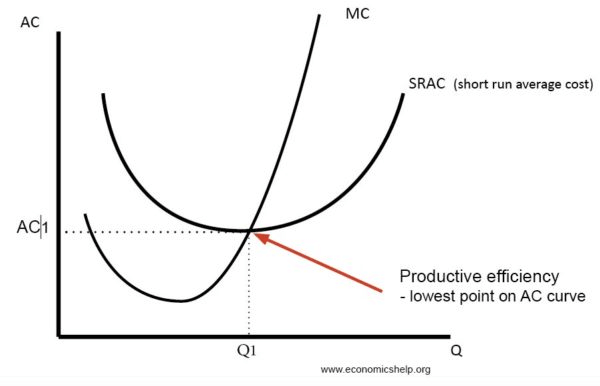
This occurs when the maximum number of goods and services are produced with a given amount of inputs. This will occur on the production possibility frontier. On the curve, it is impossible to produce more goods without producing fewer services. Productive efficiency will also occur at the lowest point on the firm’s average costs curve (Q1)
2. Allocative efficiency
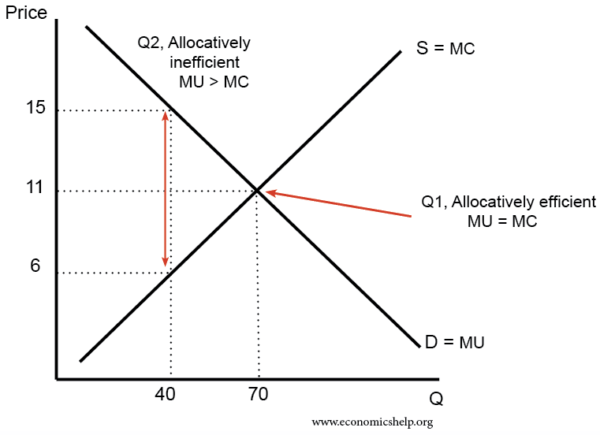
This occurs when goods and services are distributed according to consumer preferences. An economy could be productively efficient but produce goods people don’t need this would be allocative inefficient.
Allocative efficiency occurs when the price of the good = the MC of production. This occurs at an output of 80, where price £11 = MC.
At an output of 40, The price £15 is much greater than MC of £6 – there is underconsumption.
3. X inefficiency
This occurs when firms do not have incentives to cut costs, for example, a monopoly which makes supernormal profits may have little incentive to get rid of surplus labour.
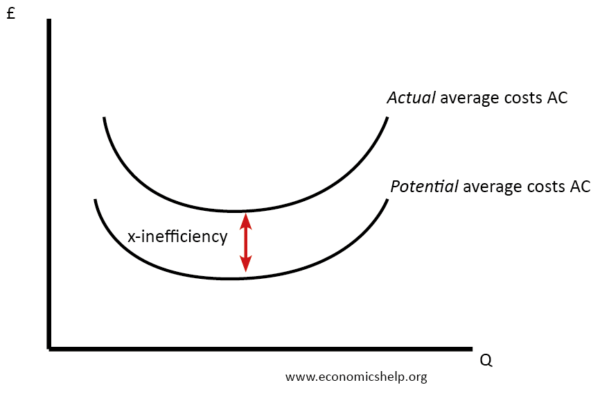
If a firm’s average costs are higher than potential – then we are x-inefficient.
4. Efficiency of scale

This occurs when the firms produces on the lowest point of its long-run average cost (Q2) and therefore benefits fully from economies of scale
5. Dynamic efficiency
This refers to efficiency over time, for example, a Ford factory in 2010 may be very efficient for the time period, but by 2017, it could have lost this relative advantage and by comparison would now be inefficient. Dynamic efficiency involves the introduction of new technology and working practices to reduce costs over time.
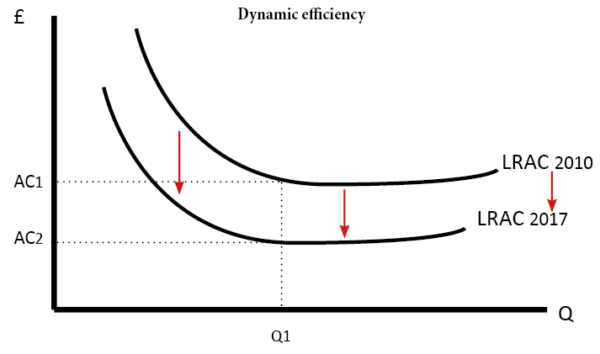
- Dynamic efficiency
- Static efficiency – efficiency at a particular point in time.
6. Social efficiency
This occurs when externalities are taken into consideration and occurs at an output where the social cost of production (SMC) = the social benefit (SMB)

Social efficiency occurs at an output of 16 – where SMB = SMC
7. Technical efficiency
This requires the optimum combination of factor inputs to produce a good: it is related to productive efficiency.
8. Pareto efficiency
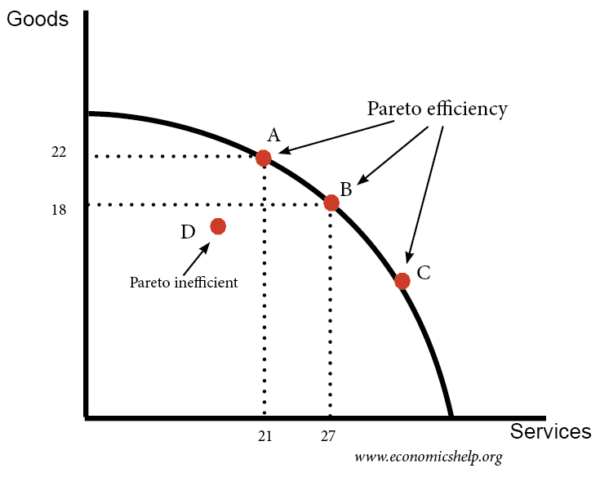
A situation where resources are distributed in the most efficient way. It is defined as a situation where it is not possible to make one party better off without making another party worse off.
9. Distributive efficiency
Concerned with allocating goods and services according to who needs them most. Therefore, requires an equitable distribution.
|
69 videos|101 docs|23 tests
|
FAQs on Concept of Efficiency - Economics Concepts, Business Economics & Finance - Business Economics & Finance - B Com
| 1. What is the concept of efficiency in economics? |  |
| 2. How is efficiency measured in economics? |  |
| 3. What are the benefits of achieving efficiency in business economics? |  |
| 4. How can businesses improve efficiency in their operations? |  |
| 5. What are the potential challenges in achieving efficiency in economics? |  |
















